BroodMinder-Cell T91
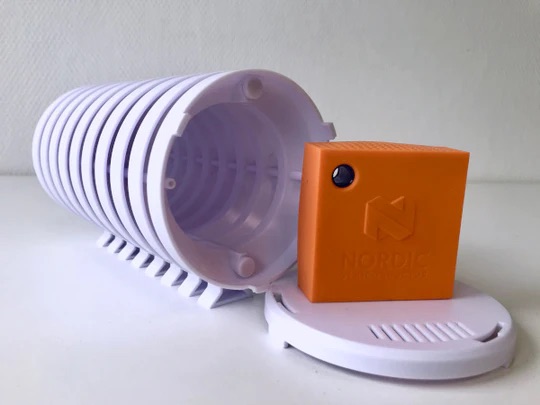
The BroodMinder-T91 (BRM-54) Cell Hub is based on the Nordic "Thingy 91".
Important: Real-Time Data Requires a Premium Membership
Real-time data streaming through a hub is a Premium feature in MyBroodMinder. To enable it, you must have an active Premium subscription.
Since the new membership model launched in January 2025, a single Premium membership allows you to use as many hubs as needed. Subscriptions are no longer linked to individual hubs—you only need one subscription per account, regardless of how many hubs you operate.
Note: When you receive a hub, it is not yet linked to your account. You’ll need to claim it manually, just like any other BroodMinder device.
Watch the video to get started:
Solar version
Lifelong powered version

Weather version
Use the Weather Shield to protect the T91.

Steps to get your hub up and running
-
We recommend you test everything before taking it to your apiary.
-
Turn on the hub using the slide switch.

- In the Bees App, go to the
Devicestab and, like every other sensor, claim your hub. This will assign it to your account.

- Enter the
... > Show detailsmenu.
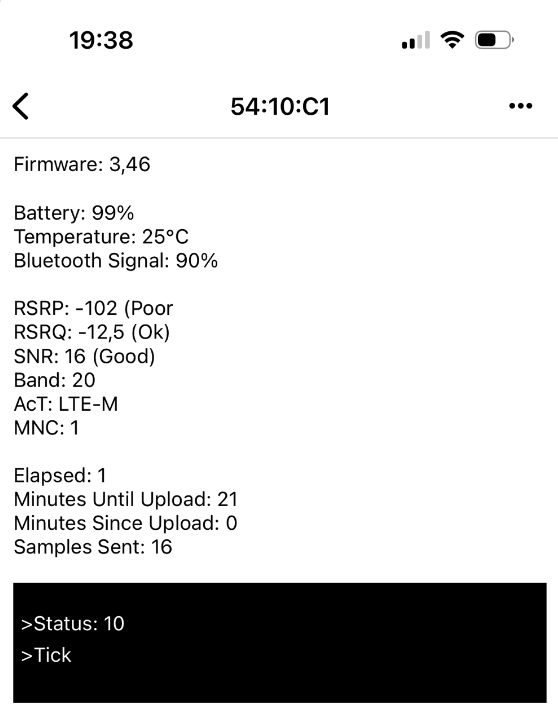
- Here you can check some key elements of your hub such as the firmware version, network signal and quality metrics, and selected carrier.
- At the bottom of the screen, there is a black console box displaying the current status of the hub (you must be close to the hub with your smartphone—this data is sent via Bluetooth). You can watch it boot and connect to the cloud. Most of the time, its normal status will be
tickortock, indicating smooth operation.
Tip
If the hub fails to reach the network, a timeout will appear after a few attempts and the LED will begin blinking red.
-
If you have a solar T91, ensure that the gasket is seated correctly when replacing the lid. Also, make sure the solar panel is facing the sun for most of the day.
-
If you have a naked T91, it must be placed in a weatherproof housing. We recommend the Lacrosse Solar Shield, and placing the T91 in the provided mesh bag to prevent small insects (such as earwigs) from entering.
-
Once you see it working properly, move it to your apiary. When in place, check the
tick/tockstatus again to confirm proper operation and network quality at that location.
Assigning the hub to an apiary
By default, hubs are automatically assigned to the apiary of the devices they are transmitting data for.
For example, if a scale is assigned to Hive 1 in Apiary 1, and the hub is sending data for that scale, it will automatically assign itself to Apiary 1.
⚠️ It will not reassign itself again if moved — manual reassignment is required in MyBroodMinder.
- Go to MyBroodMinder.com, choose
Configure, and expand theHubssection. - Click on the
Editicon to assign or move the hub to an apiary.
Check a hub remotely
Over time, we have implemented advanced features in our hubs that allow you (and us) to monitor and troubleshoot remotely.
Networks can be unpredictable. Between multiple carriers, antenna types, protocols, geographic environments, and variations in signal strength and quality, it may occasionally happen that a hub runs into issues (less often than you'd expect, but it happens). When it does, having the ability to monitor hub behavior remotely is invaluable. In MyBroodMinder, you can access this by clicking on the hub name to view the Hub Chart.
By default, it displays key metrics such as:
- Temperature
- Humidity
- Pressure
- Battery level
These are generally self-explanatory.
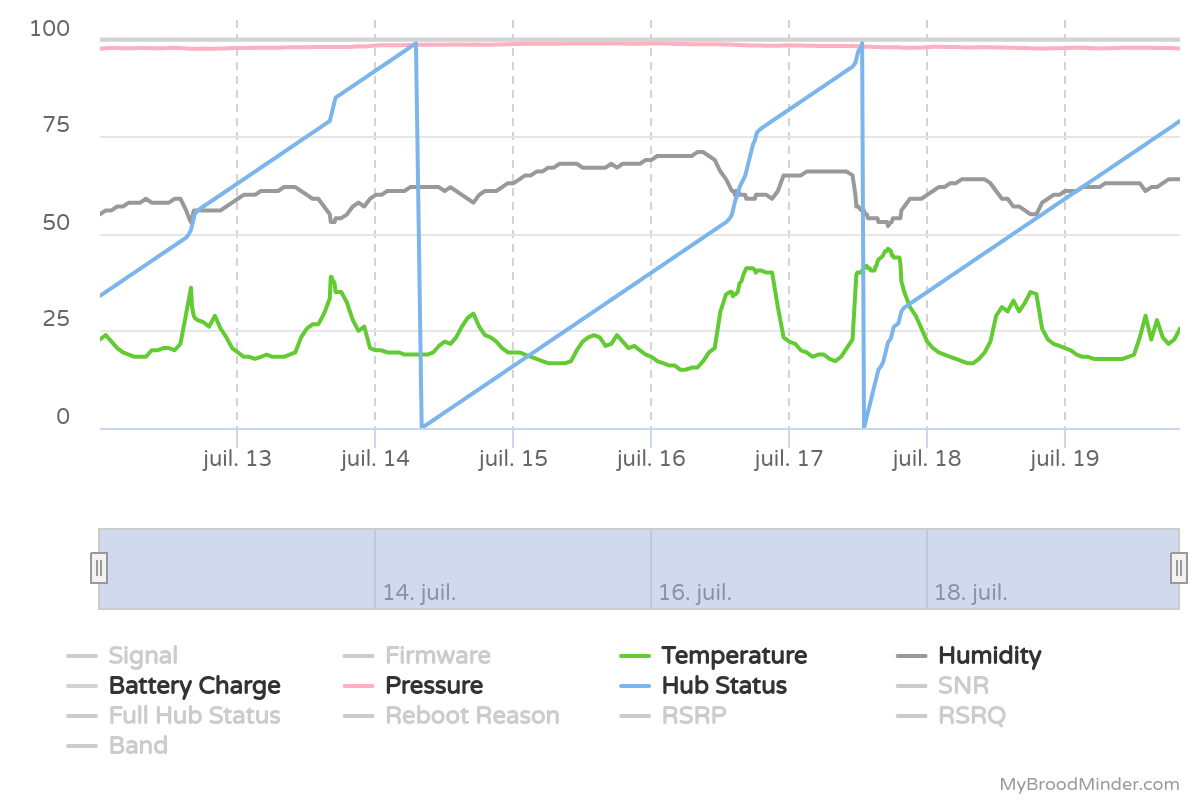
Hub Status
- Hub Status is a simple counter: every time the hub sends data to the cloud, it increments by 1 until it reaches 100, then resets to 0.
- If a Swarminder event occurs during the hour, the hub sends that too — so the counter may increment faster as you can notice in the chart above.
- A drop to zero before reaching 100 means the hub has restarted unexpectedly (e.g. low power, crash, or signal failure).
- Gaps in the graph mean the hub was unable to send data for some time (no network, SIM issue, or system freeze).
Now let's look at the remaining metrics on this chart, all related with network aspects.
Interpreting Cellular Network Metrics
Modern BroodMinder hubs report 3 key network quality metrics:
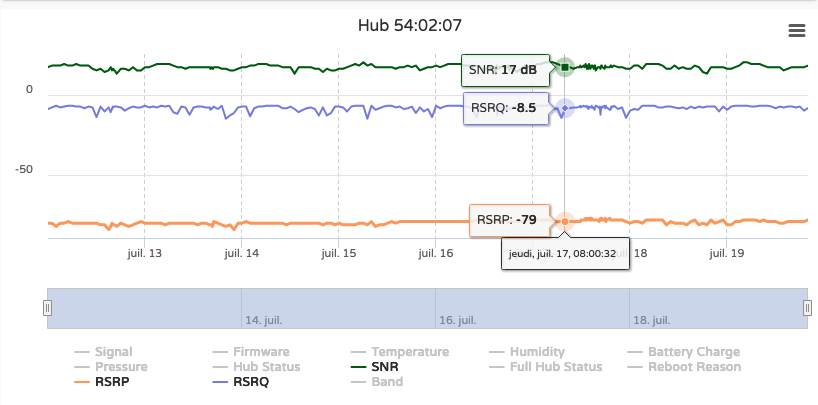
SNR – Signal to Noise Ratio
- Measures the clarity of the signal received.
- High SNR means low background noise, which is excellent.
- A negative value means the noise is stronger than the signal.
Ideal: the higher the better
RSRQ – Reference Signal Received Quality
- Indicates the overall quality of the LTE connection, taking interference into account.
- Reflects both signal strength and cell congestion.
- Important when selecting between multiple nearby towers.
Ideal: the less negative the better
RSRP – Reference Signal Received Power
- Measures the strength of the LTE signal itself.
- Helps assess whether the antenna is getting enough signal from the base station.
- Think of it as “how loud the signal is.”
Ideal: the closer to 0 (in dBm), the better
Summary table of typical signal values
| Metric | Excellent | Good | Acceptable | Poor / Issue likely |
|---|---|---|---|---|
| SNR | > 20 dB | 13 to 20 dB | 5 to 13 dB | < 5 dB or negative |
| RSRQ | > –8 dB | –10 to –8 dB | –13 to –10 dB | < –13 dB |
| RSRP | > –80 dBm | –90 to –80 dBm | –100 to –90 dBm | < –100 dBm |
Note: Some hubs work even with poor metrics, but lower values increase the risk of data loss or reboot cycles.
If your hub is showing consistently bad metrics and experiencing restarts or gaps, consider:
- Moving the hub to a better-exposed location.
- Using the external LTE antenna.
- Switching carriers (requires special configuration).
Need help interpreting your hub’s behavior? → Contact us at support@broodminder.com
Firmware Update
We may suggest updating your firmware depending on the situation. Please check with support@broodminder.com prior to doing this.
It is an easy process.
- Turn the power off and back on the T91, the LED will light blue for 5 seconds
- While the LED is blue press the silver and black push button in the middle of the unit.
- The T91 will now begin the firmware update process. It will continue to flash blue for several minutes.
- It will then flash green 10 times to indicate it has the firmware.
- It will go dark for about minute while it writes the firmware and then restart.
- All done
note: if the current firmware is too old, the unit must be returned to BroodMinder for reprogramming.
Extended range
If you are experiencing poor cell network coverage, an external antenna may improve the situation.
We may have several solutions for your location — contact us at support@broodminder.com.
One example is this External Antenna Kit.
The antenna plugs into the connector marked “LTE” on the Thingy91.
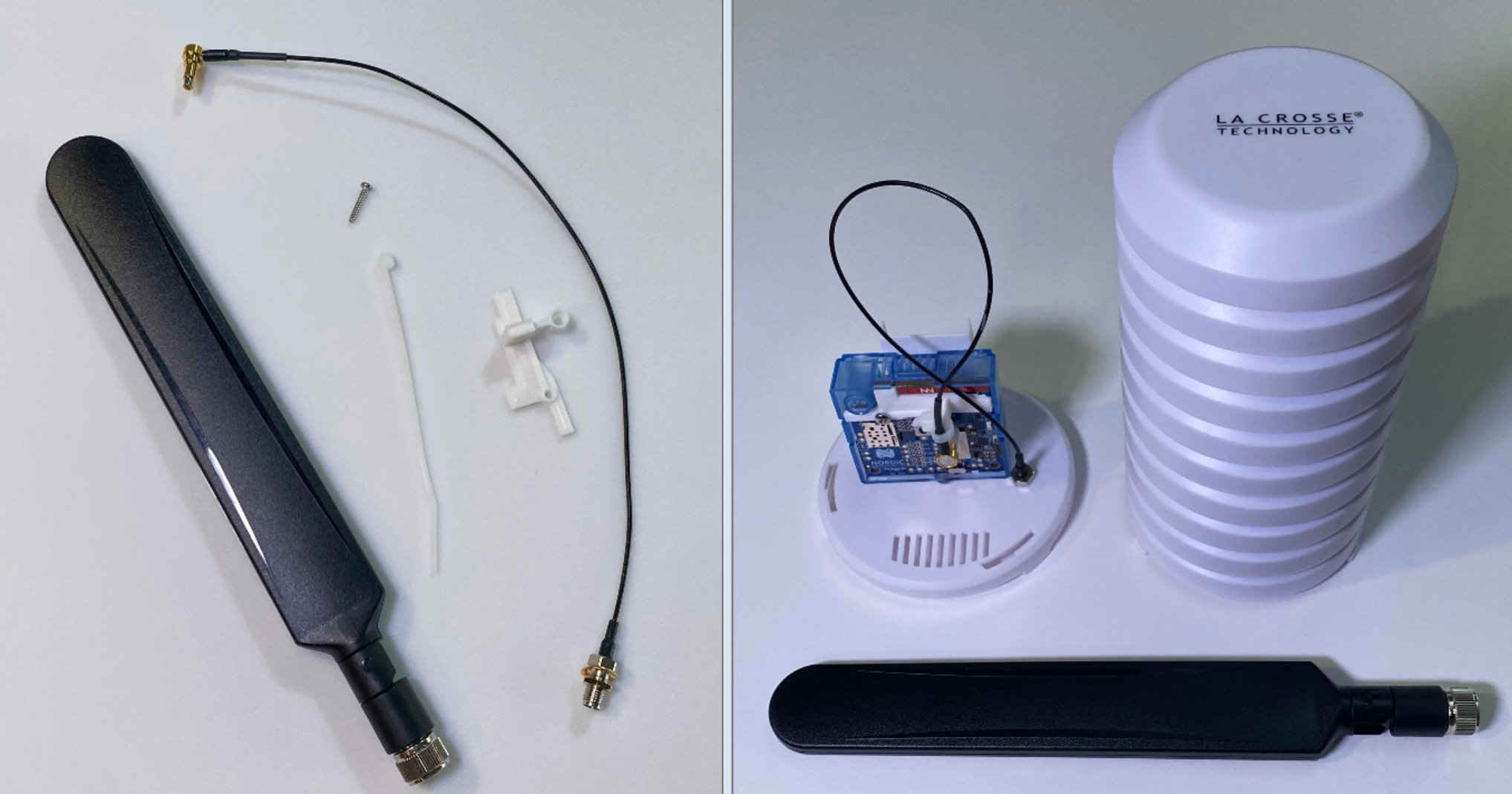
- Place the connector through the plastic mounting bracket.
- Push the connector into the Thingy91’s LTE jack.
- Secure the bracket using the included screw.
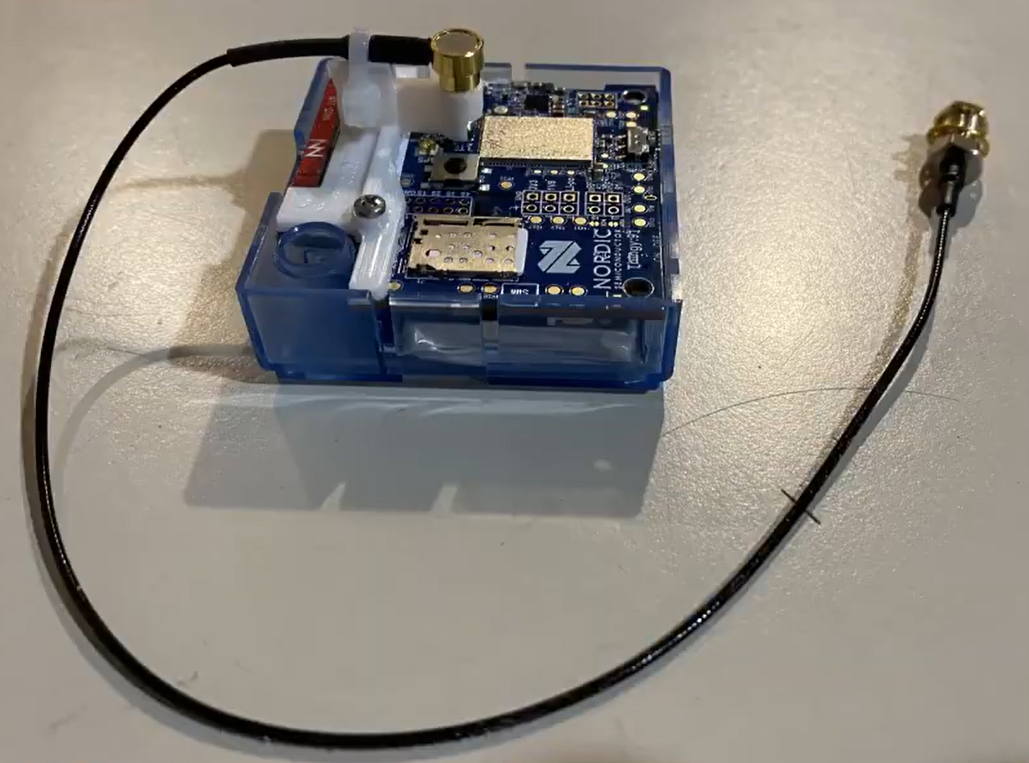
Replacing SIM card
Simply push in to extract the old SIM and again push in to introduce the new one.

